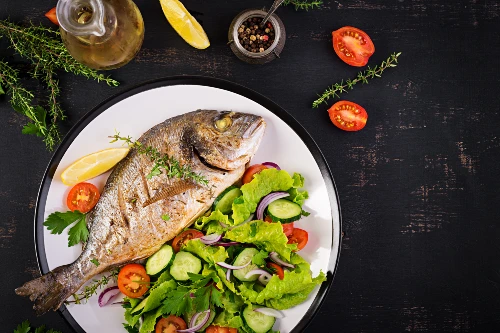Your Dominican Food Guide – 10 Must-Try Dishes and Where to Find Them
The Dominican Republic isn’t just about turquoise waters and white-sand beaches—it’s also home to a vibrant food culture that blends Spanish, African, and Taino influences. From hearty stews to sweet tropical treats, Dominican cuisine is bold, flavorful, and deeply rooted in local traditions. Make sure to try all the must-have dishes before you go!
1. La Bandera
What it is: Literally “the flag,” this is the national dish—white rice, stewed beans, and meat (usually chicken, beef, or pork), served with salad or fried plantains.
Why try it: It’s the daily heartbeat of Dominican home cooking.
Where to find it: Any traditional comedor (local eatery); try Adrian Tropical in Santo Domingo.
2. Mangu
What it is: Mashed green plantains topped with sautéed red onions, often served with eggs, fried cheese, and salami for breakfast.
Why try it: Comfort food at its finest, with flavors that stick with you.
Where to find it: Morning markets and diners; El Conuco in Santo Domingo does a great version.
3. Sancocho
What it is: A rich stew made with root vegetables and various meats—chicken, pork, beef, or all three.
Why try it: It’s a celebration dish, often made for family gatherings.
Where to find it: Best in rural towns or at festivals; try El Mesón de la Cava in Santo Domingo.
4. Mofongo
What it is: Mashed fried plantains mixed with garlic and chicharrón (pork cracklings), served with broth or as a side to seafood.
Why try it: Originally Puerto Rican, but Dominicans make it their own with fresh local ingredients.
Where to find it: Mofongo King in Santiago or coastal seafood restaurants.
5. Chicharrón
What it is: Crispy fried pork belly or skin, often served with lime and yucca.
Why try it: Perfectly crunchy, salty, and addictive.
Where to find it: Roadside stands on the way to Bonao, or El Rey del Chicharrón in Santo Domingo.
6. Pastelón
What it is: A sweet-and-savory baked casserole made from layers of ripe plantains, beef, and cheese.
Why try it: Think of it as a Caribbean lasagna—comforting and unique.
Where to find it: Adrian Tropical or home-style restaurants in Puerto Plata.
7. Pescado Frito
What it is: Whole fried fish, usually served with tostones (fried plantains) and salad.
Why try it: Crispy skin, tender flesh, and ocean views—it’s the beach meal you dream about.
Where to find it: Beach shacks in Boca Chica, Bayahibe, and Las Terrenas.
8. Habichuelas con Dulce
What it is: Sweet creamed beans made with coconut milk, sugar, cinnamon, and raisins—served chilled.
Why try it: Unusual but delicious, this Easter treat is uniquely Dominican.
Where to find it: During Lent in homes and bakeries; La Cuchara de Madera in Santo Domingo.
9. Yaniqueque
What it is: Crispy fried dough, often enjoyed as a snack or beach food.
Why try it: Simple, satisfying, and perfect with a cold drink by the sea.
Where to find it: Vendors along the beaches of Boca Chica and Juan Dolio.
10. Morir Soñando
What it is: A creamy, refreshing drink made from orange juice, milk, sugar, and ice.
Why try it: The name means “to die dreaming”—and it lives up to it.
Where to find it: Cafés, juice bars, and street vendors across the country.
Tips for Eating Like a Local
- Eat at comedores: Small local restaurants are where you’ll find the most authentic flavors.
- Try street food: Some of the best bites come from roadside vendors.
- Go coastal for seafood: Freshness is guaranteed when the ocean’s steps away.
Final Thoughts
Dominican food is all about warmth—both in flavor and in the people who make it. Whether it’s a bowl of mangu for breakfast, pescado frito by the beach, or habichuelas con dulce on a holiday, each dish tells a story of history, family, and island life.




Comments are closed